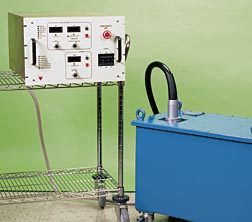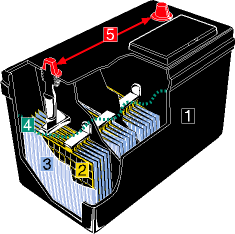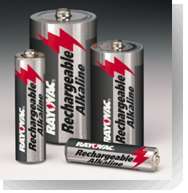
Topic 11: Electrochemistry
a) How does electric current flow? (Energy transfer)
Electricity: Energy
associated with electrons that have moved from one place to another.
Porous Barrier:
Any medium through which ions can slowly pass.
Voltaic Cell:
An electrochemical cell in which a spontaneous redox reaction produces a
flow of electrons through an external circuit.
Half-Cell:
The part of a voltaic cell in which either oxidation or reduction occurs.
It consists of a single electrode immersed in a solution of its ions.
Anode:
The electrode at which oxidation occurs as electrons are lost by some
substance.
Oxidation:
Loss of electrons by an atom or an algebraic increase in its oxidation
state.
Reduction:
The gain of electrons by an atom or the algebraic decreases in its oxidation
state.

Electrons flowing through a wire generate energy in the
form of electricity.
The temperature increases only slightly as the reaction progressed, so
little energy was produced as heat. When
the reactants are arranged so they do not tough each other energy is in the for to
electricity rather than heat. When
an electrochemical cell produces electricity, it is also known as a voltaic cell. The
branch of chemistry concerned with the interconversion of chemical energy with
electric energy is electrochemistry. A
voltaic cell, therefore, is actually made from two separate components.
Each component, a half-cell,
consists of a metal electrode in contact with a solution of its ions.
Any element that loses electrons is said to have under gone oxidation. Oxidation
takes place at the anode. Any
element that experiences a gain in electrons has undergone reduction.

b) How are electron transfers described? (Assigning oxidation states using electronegativity)
Oxidation State: A numerical representation of an atom's share of the bonding electrons. In ionic compounds, it is equal to the ionic charge. In covalent compounds, it is the average charge assigned to an atom according to electronegativities.
Oxidation states represent an atom's share of the molecule's bonding electrons. Half-reactions, hence redox reaction, are characterized by the loss and gain of electrons. This trading of electrons brings out changes in the oxidation states of elements participating in the reaction. An oxidation state, also know as an oxidation number, is a value representing the apparent share for each atom in a molecule based on the general distribution of bonding electrons among all the atoms in the molecule.
c) How do batteries work?
Battery: a single voltaic cell or group of voltaic cells that are connected together.
They are two different kinds of batteries and they are Consumable and Rechargeable. The consumable ones are the ones that you can only use one time and they are no good any more. The rechargeable ones are the batteries that you can keep on using if you recharge it after they are week. Most common consumable batteries contain zinc-carbon. It is a paste that stores the energy. An alkaline battery is powered by a zinc-carbon cell bridged by KOH paste. A mercury battery is an environmental hazard.
Rechargeable batteries
Electrolysis: A process in which electric energy is used to bring about a chemical change.
Electrolytic cell: An electrochemical cell in which electric energy from an external source causes a nonspontaneous redox reaction to occur.

A picture of a car battery.
Electrochemical cells can be recharged. The process in which electric energy is used to drive a redox reaction is electrolysis. The container in which electric energy drives a nonspontaneous redox reaction is an electrolytic cell. A car battery is a combination electrochemical - electrolytic cell. A lead-acid battery is a type of battery used in cars. A ni-cad battery is also rechargeable. It is a lightweight battery, consisting of nickel-cadmium battery. This battery type is coming more popular because of its environmental safety.
